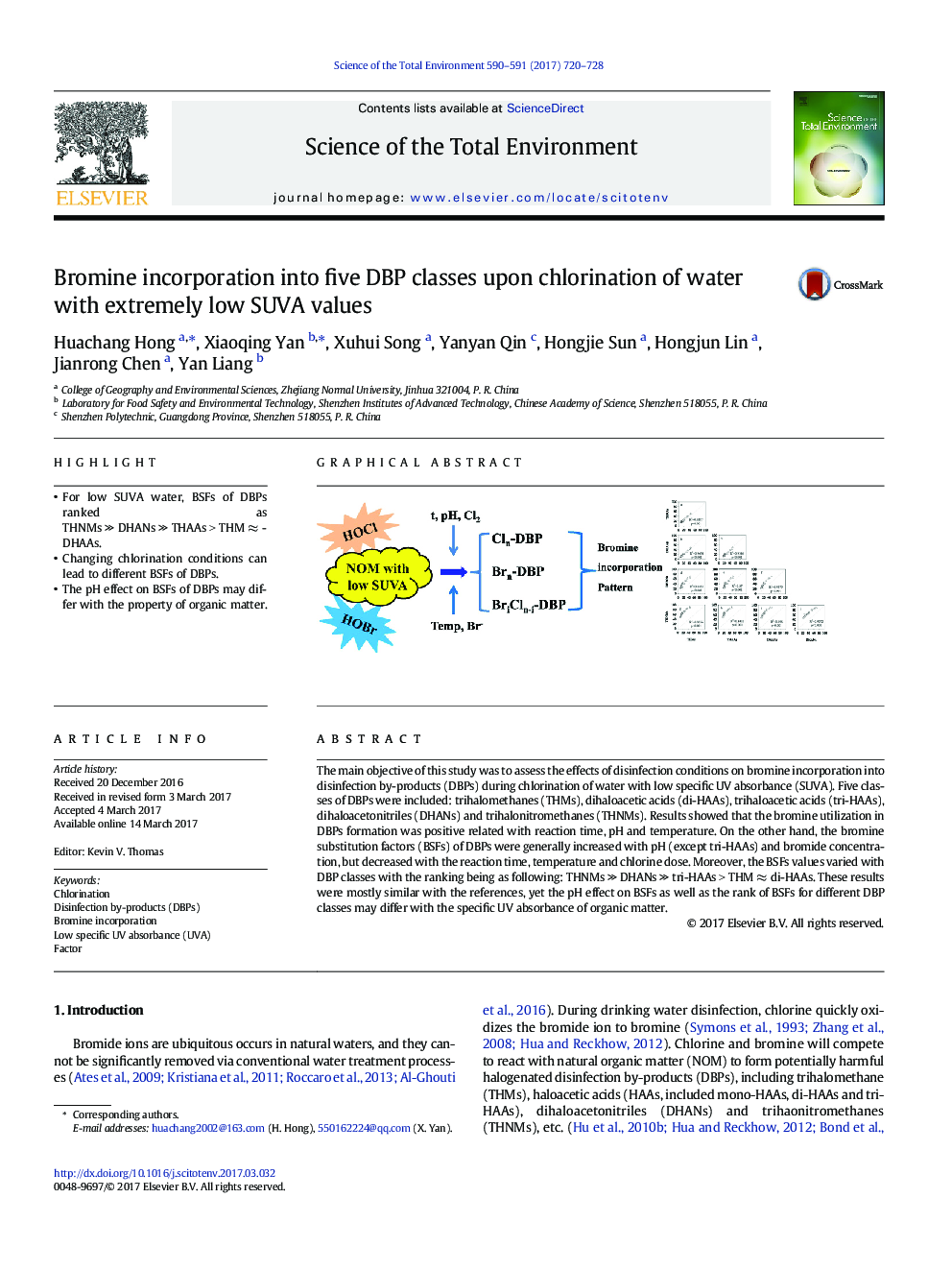| Article ID | Journal | Published Year | Pages | File Type |
|---|---|---|---|---|
| 5751084 | Science of The Total Environment | 2017 | 9 Pages |
Highlightâ¢For low SUVA water, BSFs of DBPs ranked as THNMs â«Â DHANs â«Â THAAs > THM â DHAAs.â¢Changing chlorination conditions can lead to different BSFs of DBPs.â¢The pH effect on BSFs of DBPs may differ with the property of organic matter.
The main objective of this study was to assess the effects of disinfection conditions on bromine incorporation into disinfection by-products (DBPs) during chlorination of water with low specific UV absorbance (SUVA). Five classes of DBPs were included: trihalomethanes (THMs), dihaloacetic acids (di-HAAs), trihaloacetic acids (tri-HAAs), dihaloacetonitriles (DHANs) and trihalonitromethanes (THNMs). Results showed that the bromine utilization in DBPs formation was positive related with reaction time, pH and temperature. On the other hand, the bromine substitution factors (BSFs) of DBPs were generally increased with pH (except tri-HAAs) and bromide concentration, but decreased with the reaction time, temperature and chlorine dose. Moreover, the BSFs values varied with DBP classes with the ranking being as following: THNMs â«Â DHANs â«Â tri-HAAs > THM â di-HAAs. These results were mostly similar with the references, yet the pH effect on BSFs as well as the rank of BSFs for different DBP classes may differ with the specific UV absorbance of organic matter.
Graphical abstractDownload high-res image (227KB)Download full-size image
